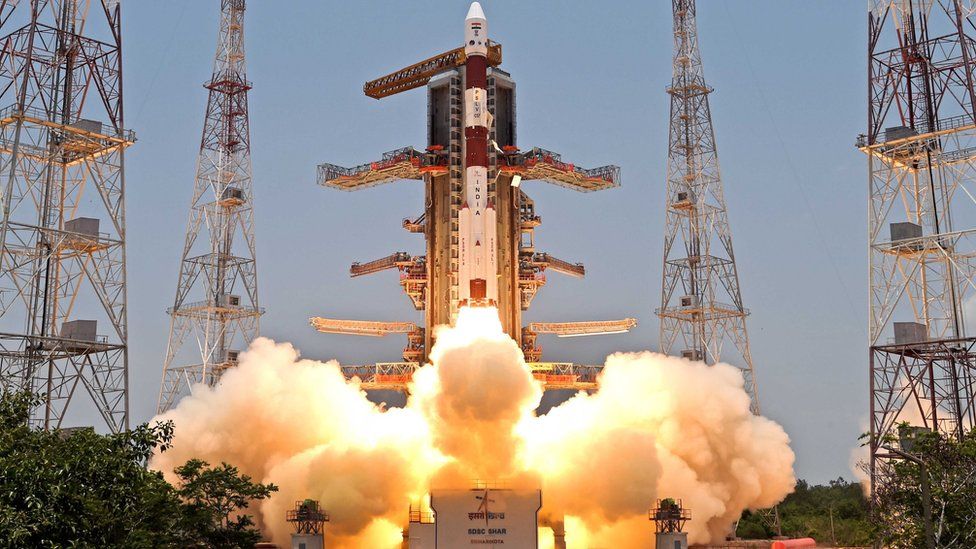Aditya-L1: India's solar mission reaches Sun's orbit
- Published
- comments

India says a spacecraft it sent to observe the Sun has reached its final destination in space.
The Aditya-L1 satellite was launched in September last year and is the country's first mission to the Sun.
It will now spend five years in space observing solar activity, solar wind and solar flares - and their affect on Earth.
Experts hope that it will help improve our scientific understanding of the Sun - the 4.5 billion-year-old star that holds our solar system together.
What's happened?
The spacecraft has been travelling towards the Sun for four months since being launched on 2 September 2023.
On Saturday, it was announced that Aditya-L1 had reached the spot in space from where it will be able to continuously watch the Sun.
It's hoped that now Aditya-L1 is in the Sun's orbit, it will need very little fuel to operate and will be able to watch the Sun constantly and carry out scientific studies.
Why is it called Aditya-L1?
India's first space-based mission to study the solar system's biggest object is named after Surya - the Hindu god of Sun who is also known as Aditya.
And L1 represents the exact place between the Sun and Earth where the Indian spacecraft is heading.
India's Prime Minister Narendra Modi called the mission "a landmark" and an "extraordinary feat".
Posting on social media, Mr Modi said: "It is a testament to the relentless dedication of our scientists in realising among the most complex and intricate space missions."
Aditya-L1 will allow scientists to observe solar activity, solar wind and solar flares, and their effect on Earth, and will help improve our scientific understanding of the Sun.
India's Space Agency (Isro) said that some of the instruments on board the satellite have already started work, gathering data and taking images.
The Aditya-L1 mission is not the country's first venture into space - last year India successfully landed the world's first-ever probe near the lunar south pole.
